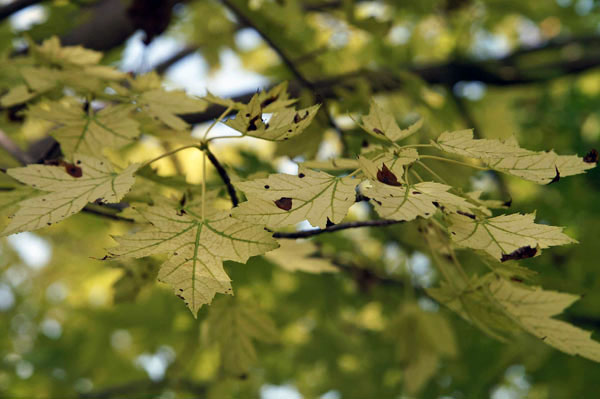Talking Plants
Jillian Patrie | University of Minnesota Yard and Garden Extension
Soil health is an important part of plant health and can be overlooked when planting a garden or landscape. The Red River Valley is known for its dark, sticky, and organic rich soils left behind by Glacial Lake Agassiz. Soil can be different from one yard to the next or even from backyard to front yard, so how do you know if a soil is healthy?
When beginning a new landscape or garden it is helpful to know what type of soil you will be planting in. Soil testing can tell us about soil type, organic matter, pH, and nutrients levels that are ideal for plant health. In a healthy soil, microorganisms like bacteria, nematodes, insects, fungi, and earthworms all work together to breakdown, replenish & provide nutrients to plant roots. Air, water, and nutrients are all part of a soil ecosystem and are important in many ways for soil health.
Organic matter is composed of living roots, organisms, decomposing plants, animal residue and enzymes from soil organisms. As fungi and bacteria break down organic matter, those nutrients become available to plants, and the cycle continues. There are 17 essential nutrients needed for plant health; big players like Nitrogen, Phosphorus and Potassium are called Macronutrients and smaller players like iron, copper and zinc are called Micronutrients. Air and water are key elements for microorganisms & plant roots to use soil nutrients effectively.
Soil compaction can limit plant roots’ access to air and water making it difficult for plants to use available nutrients. Incorporating compost into compacted garden soils increases space for air and water movement. Incorporate 1-2 inches of compost, 6-8 inches deep into soils for flowers and vegetables every growing season. Rotating crops from year to year will help replenish nutrients used by other crops. Legumes like beans and peas return nitrogen back into the soil by forming a beneficial relationship with soil bacteria.
Red River Valley soil is rich in organic matter which has been beneficial for area farmers. The common soil issues in the Red River Valley are due to soil type, pH and alkalinity. Clay soils are known for their water retention and filtration qualities; however, when filtration is slow, over saturated soils can be a problem for plants. Valley clay soils also expand, and contract dramatically based on soil moisture levels. We can see large cracks form in the soil during times of little rainfall, and basement flooding during the spring or large rain events.
Valley soil pH levels are considered basic (around 7.5-8.5, neutral is 7, and less than 7 is acidic). Alkalinity of soil and water is influenced by soil types, soil minerals, and pH. Valley soils have high alkalinity, affecting the ability of soil pH to be lowered (acidified). Some nutrients cannot be effectively used by certain plants in high pH and alkaline soils. Iron Chlorosis in the FM area is seen commonly in Red and Silver Maples, among others, turning leaves a lime green color, while veins remain dark green. Iron Chlorosis can be managed in some cases by applying specific Iron fertilizers. Creating more acidic soil environments for blueberries, blue hydrangea, and rhododendron can be challenging.
Healthy soil goes a long way to maintaining healthy landscapes and gardens, and choosing the right plant for the right place can decrease challenges due to soil.
For more information on soil testing visit https://soiltest.cfans.umn.edu/testing-services/lawn-garden . If you have questions about this article or soil testing, please contact local Clay County Extension Educator Jillian Patrie by email at patri350@umn.edu or by phone at 218-299-7338.


